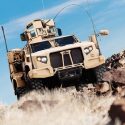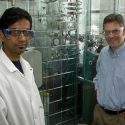Invitrogen, WARF sign license agreement for human embryonic stem cells
Invitrogen Corp., a provider of essential life science technologies for research, production and diagnostics, and the Wisconsin Alumni Research Foundation (WARF), the private, nonprofit patenting and licensing organization for the University of Wisconsin–Madison, announced today (May 8) that they have signed a license for human embryonic stem cell (hESC) patents for the development of research tools. Under the terms of the agreement, Invitrogen will have the right to work with karyotypically normal hESCs to develop novel research and drug discovery tools.
"Invitrogen’s goal is the development of research tools that enhance the ability of scientists to work with embryonic stem cells and to enhance the utility of these cells for research and drug discovery," says Joydeep Goswami, vice president, stem cells and regenerative medicine at Invitrogen. "Having the ability to work with karyotypically normal hESCs through our license with WARF allows us to develop better technologies for research, such as more defined media and engineered stem cell lines. This agreement is another step in our strategy of pursuing advances in the high-growth area of regenerative medicine."
"We are pleased to have a signed license with Invitrogen," says Carl Gulbrandsen, managing director of WARF. "Invitrogen’s market penetration and knowledge of cell biology research tools will help support and nurture the growth of the burgeoning hES cell industry."
WARF officials note the licensing agreement with Invitrogen demonstrates that commercial interest in human embryonic stem cells remains strong. With this agreement, WARF now has completed 24 licensing agreements for stem cell technologies with 18 companies.
Invitrogen Corp. provides products and services that support academic and government research institutions and pharmaceutical and biotech companies worldwide in their efforts to improve the human condition. The company provides essential life science technologies for disease research, drug discovery and commercial bioproduction.
Invitrogen’s own research and development efforts are focused on breakthrough innovation in all major areas of biological discovery including functional genomics, proteomics, stem cells, cell therapy and cell biology — placing Invitrogen’s products in nearly every major laboratory in the world.
Founded in 1987, Invitrogen is headquartered in Carlsbad, Calif., and conducts business in more than 70 countries around the world. The company employs approximately 4,700 scientists and other professionals and had revenues of approximately $1.3 billion in 2007. For more information, visit http://www.invitrogen.com.
The Wisconsin Alumni Research Foundation supports world-class research at UW–Madison by protecting the intellectual property of university faculty, staff and students, and licensing inventions resulting from their work. WARF was established in 1925 as the world’s first university-based technology transfer office.
Safe Harbor Statement
Certain statements contained in this press release are considered "forward-looking statements" within the meaning of the Private Securities Litigation Reform Act of 1995, and it is Invitrogen’s intent that such statements be protected by the safe harbor created thereby. Forward-looking statements include, but are not limited to 1) Invitrogen’s work with karyotypically normal hESCs through the license with WARF allows the development of better technologies for research; 2) Invitrogen’s market penetration and knowledge of cell biology research tools will help support and nurture the growth of the hESC industry. Potential risks and uncertainties include, but are not limited to, a) Invitrogen’s development of research tools may or may not enhance the ability of scientists to work with embryonic stem cells nor enhance the utility of these cells for research and drug discovery; b) commercial interest in hESCs may or may not remain strong; as well as other risks and uncertainties detailed from time to time in Invitrogen’s Securities and Exchange Commission filings.



